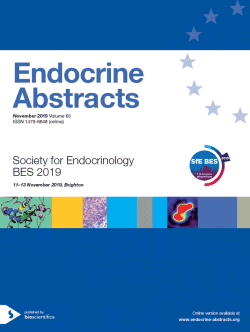
Society for Endocrinology BES 2019
Brighton,
United Kingdom
11 Nov 2019 - 13 Nov 2019

ORAL POSTER PRESENTATIONS
Reproductive Endocrinology and Biology
ea0065op5.1 | Reproductive Endocrinology and Biology | SFEBES2019
Hypothalamic-pituitary-gonadal (HPG) axis suppression during basic military training in women despite increased adiposity and insulin resistance
Gifford Robert M , O'Leary Thomas J , Wardle Sophie L , Greeves Julie P , Anderson Richard A , Woods David R , Reynolds Rebecca M
ea0065op5.2 | Reproductive Endocrinology and Biology | SFEBES2019
Profiling the expression and function of the truncated oestrogen receptor isoform ER46 in human endometrium
Gibson Douglas , Esnal-Zufiaurre Arantza , Bajo-Santos Cristina , Collins Frances , Critchley Hilary , Saunders Philippa
ea0065op5.3 | Reproductive Endocrinology and Biology | SFEBES2019
Stress is implicated in programming metabolic disorders in the offspring of fructose-induced diabetic rats
Iranloye Bolanle , Ogunsola Bimbo , Adegoke Olufeyisipe
ea0065op5.4 | Reproductive Endocrinology and Biology | SFEBES2019
Kisspeptin as a novel biomarker for pregnancy complications
Phylactou Maria , Abbara Ali , Al-Memar Maya , Eng Pei Chia , Comninos Alexander N , Izzi-Engbeaya Chioma , Clarke Sophie A , Mills Edouard , Nadir Rans , Sykes Mark , Pacuszka Ewa , Yang Lisa , Fourie Hanine , Bech Paul , Kelsey Tom W , Bourne Tom , Dhillo Waljit S



